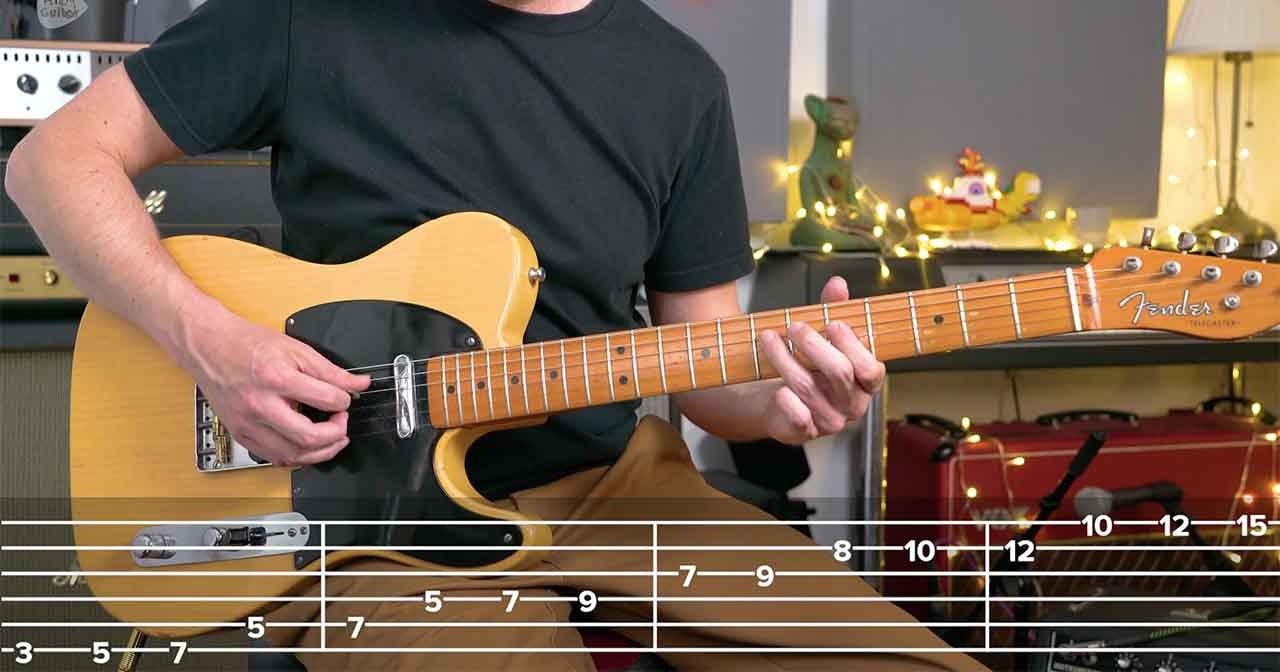In this video
In this lesson we look at moving diagonally in a scale, which helps us break free from the typical box patterns on the guitar and explore more of the fretboard, which opens up lead your playing greatly!
Here are bitesized breakdowns with lots of tips and ideas to help you fully grasp the concepts and apply them effectively:
Understanding Diagonal Scale Shapes
Concept: Instead of playing scales in traditional vertical patterns, you're exploring the fretboard diagonally. This means you’ll be moving across strings and up or down the neck in a way that breaks out of the usual patterns.
Application: This method allows for smoother transitions and a more connected feel between notes, making your playing more fluid and dynamic.
Anchoring with Octaves
Octaves as Reference Points: Using octaves to anchor your notes helps you navigate the fretboard. For example, if you're playing a C note on the 3rd fret of the A string, the octave is on the 5th fret of the G string.
Pattern Recognition: By recognising these octave shapes, you can map out the scale across the fretboard. Despite the changes when crossing the B string, the patterns remain consistent, which helps in internalising the scale.
Handling the B String Shift
Guitar Tuning Quirk: The tuning shift between the G and B strings means the pattern changes slightly when crossing from the G string to the B string. It’s crucial to adjust your fingerings accordingly to maintain the scale.
Practice Tip: Slow down when crossing the B string and pay extra attention to the finger placement to ensure smooth transitions.
Adding Slides and Blues/Pentatonic Notes
Sliding for Smoothness: Sliding between notes can add a smoother, more connected feel to your scale runs. It also injects a bit of that country flair into your playing.
Incorporating Blues/Pentatonic Notes: Adding notes like the flat 3rd and the 5th from the blues scale or minor pentatonic adds character to your scales. Think of it as adding color to your melodies.
Thinking in Intervals:
Interval Approach: Instead of thinking strictly in terms of note names, think in intervals (Root, 2nd, flat 3rd, etc.). This helps you understand the relationship between the notes and makes it easier to transpose scales to different keys.
Memory Aid: Practicing scales this way helps solidify these sounds in your musical memory, making it easier to apply them in improvisation.
Making Scales Musical:
Creating Melodies: Scales are just a framework. The real music happens when you start creating melodies and licks. Experiment with different rhythms, note orders, and phrasing to find your unique voice on the guitar.
'Country Voice': Focus on the characteristic sounds of country music—whether it’s the twang, the bends, or the rhythmic drive that we have covered in previous lessons. Incorporating these elements will help your scales come alive in a musical context.
Connecting Chord Shapes:
Root 5 Shapes for C and D Chords: Start your scale patterns from the root notes of the chords you’re playing over first, such as C and D. This allows you to connect scale shapes more seamlessly over specific chord changes as you learn the scale inside and out.
Smooth Transition: The goal is to connect the different diagonal shapes without resetting to the root note each time a chord changes. This keeps your playing fluid and less predictable!
Practice Exercise:
- Start with a simple G major scale and try to play it diagonally across the fretboard, using octave shapes as your guide. Add slides between some notes for a smoother sound, and throw in a flat 3rd to give it a bluesy touch.
- Then, switch to a C chord and find the corresponding scale shapes. Practice moving between G, C and D without resetting to the root note, focusing on smooth, connected playing.
This approach will not only help you break out of strict scale shapes but also enhance your ability to express yourself musically across the fretboard, particularly in a country style.

